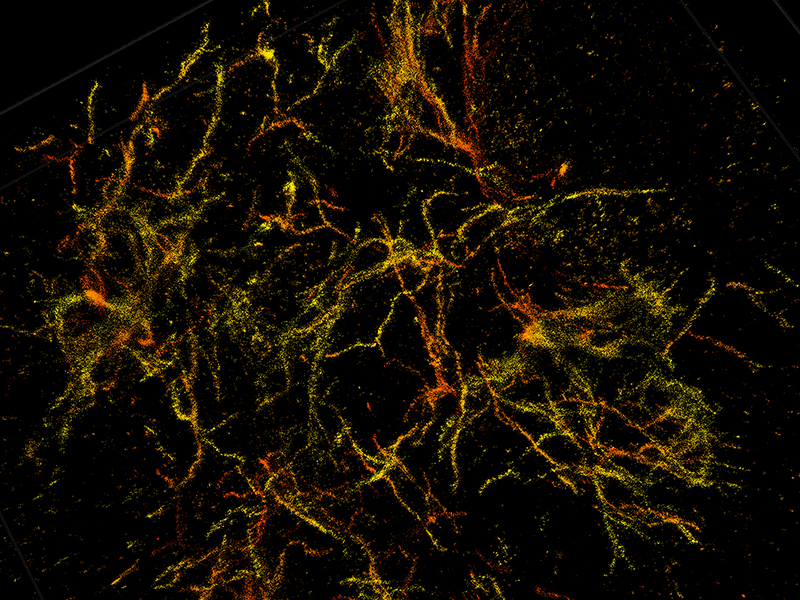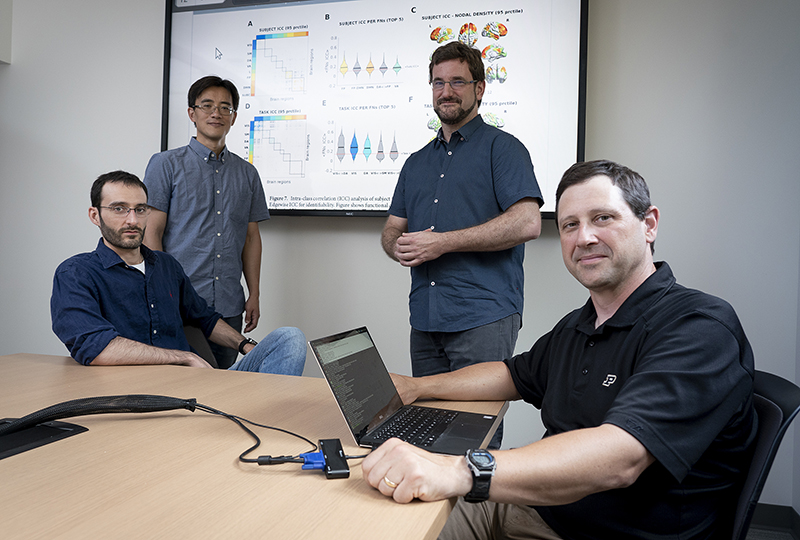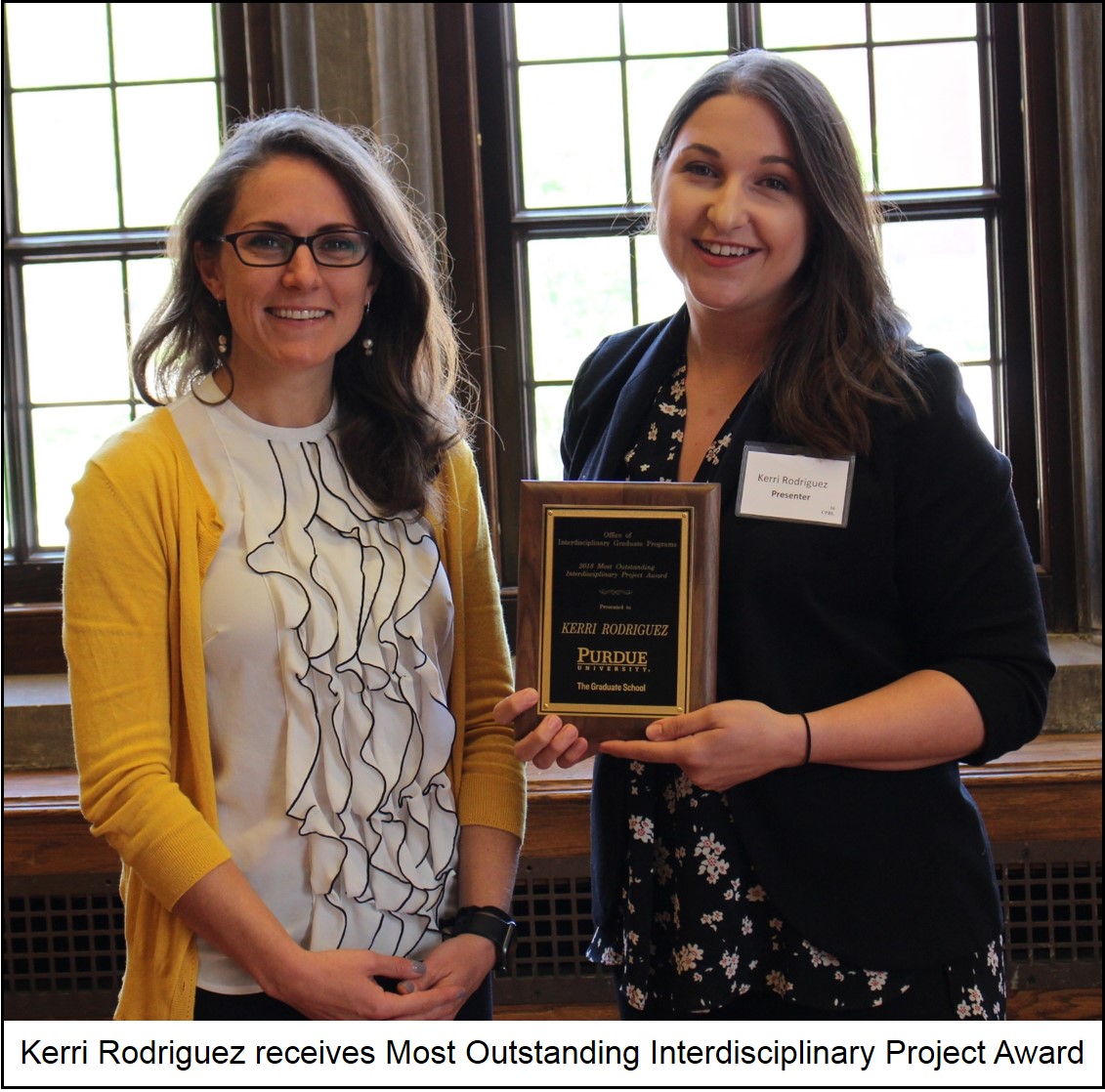
July 16, 2018
Recent studies show that 40 percent of Americans over the age of 85 have Alzheimer's disease, and that the disease begins 10 to 20 years before people show up at the doctor's office with memory problems. One major problem with understanding Alzheimer’s is not being able to clearly see why the disease starts. A super-resolution "nanoscope" developed by Purdue University researchers now provides a 3D view of brain molecules with 10 times greater detail. This imaging technique could help reveal how the disease progresses and where new treatments could intervene.
New development in 3D super-resolution imaging gives insight on Alzheimer's disease

July 12, 2018
Some level of molecules linked to oxidative stress may be essential to health and development, according to new animal studies. In a recent study from the Purdue Department of Biological Sciences, Daniel Suter’s team looked at an enzyme that produces ROS in zebrafish embryos to see if it’s essential to the development of their nervous systems. Inhibiting this enzyme, NADPH oxidase (Nox), resulted in complications with signaling between the eyes and the brain. The findings were published in The Journal of Neuroscience. The research team used a drug called celastrol to inhibit Nox activity, which led to defects in the formation of the ganglion cell layer and optic nerve, both of which send signals from the retina of the eye to the brain.
Chemicals associated with oxidative stress may be essential to development

June 28, 2018
Patients with dementia and other neural diseases show physical symptoms such as stumbling and confusion, but identifying the problem isn’t as simple as taking an X-ray. A group of researchers at Purdue University are designing data-driven tools that will help clinicians better understand the progression of neurodegenerative diseases by identifying and tracking changes in the brain. The project is led by Joaquín Goñi, an assistant professor of industrial engineering and biomedical engineering who studies the network of neural connections composing the human brain.

June 14, 2018
Purdue University researchers have developed an analytical imaging technology based on functional MRI for detecting and monitoring cerebral vascular disorders and injuries that does not require the use of contrast agents. The new imaging method focuses on tracking an intrinsic blood-related MRI signal, which has been shown to travel with the blood. The signal is used as a natural biomarker to assess blood flow in a patient. Congratulations to PIIN Member Yunjie Tong on this outstanding achievement!
Medical imaging technology detects vascular disorders, injuries in brain without invasive contrast agents
June 14, 2018
A multidisciplinary team of researchers at Purdue University and the University of Bordeaux in France has received a grant from The Michael J. Fox Foundation for Parkinson’s Disease to study a new gene associated with Parkinson’s disease, which was linked to the disease using novel big data methodologies. The findings from this research could potentially be used to design new therapies to slow neurodegeneration in the brains of patients with Parkinson’s disease and other related disorders. Jean-Christophe Rochet, professor of medicinal chemistry and molecular pharmacology at Purdue; Erwan Bezard, research director at the Institute of Neurodegenerative Diseases at the University of Bordeaux; Jason Cannon, associate professor of toxicology at Purdue; and Min Zhang, professor of statistics at Purdue, will study the neuroprotective effects of the new gene, known as NFE2L1, in Parkinson’s disease models. Their collaboration was helped by a nearly $107,000 grant from the organization named for the famous actor who has Parkinson’s.

June 11, 2018
A potential new drug therapy for spinal cord injuries has been identified by researchers at Purdue University. The drug was identified by Riyi Shi, professor in the Department of Basic Medical Sciences, College of Veterinary Medicine and Weldon School of Biomedical Engineering. The drug works in a similar way as a drug previously developed at Purdue, 4-aminopyridine, which has been approved by the U.S. Food and Drug Administration to treat multiple sclerosis. (Purdue University photo)
Possible new treatment for spinal cord injuries identified in animal studies

May 3, 2018
PIIN students really pulled in the honors from the Office of Interdisciplinary Graduate Programs! Kerri Rodriguez, a graduate student in Comparative Pathobiology, was awarded the Most Outstanding Interdisciplinary Project Award for her poster project entitled: “The Effect of Psychiatric Service Dogs on Salivary Cortisol in a Population of Military Veterans with PTSD." Five PIIN students won Certificate of Excellence awards: Dan Cholger for "Engineering and Application of Fluorescent Protein Biosensors to Visualize Purinergic Gliotransmission", Kelly Higgins for "Twelve Week Consumption Effects of Five Sweeteners on Body Weight, Energy Intake, and Energy Expenditure", Stephanie Hunter for "Effect of phenolic acids and resistant starch in potato products on post-prandial glycemia and appetite", Breanna McArthur for "Relationship between particle size and lipid bioaccessiblity in nuts" and Paola Montenegro for "Effects of the A53E substitution on alpha synuclein aggregation and neurotoxicity in Parkinson's disease models". Congratulations to all!!
April 27, 2018
Abstract: Canine leukoencephalomyelopathy (LEMP) is a juvenile-onset neurodegenerative disorder of the CNS white matter currently described in Rottweiler and Leonberger dogs. Genome-wide association study (GWAS) allowed us to map LEMP in a Leonberger cohort to dog chromosome 18. Subsequent whole genome re-sequencing of a Leonberger case enabled the identification of a single private homozygous non-synonymous missense variant located in the highly conserved metallo-beta-lactamase domain of the N-acyl phosphatidylethanolamine phospholipase D (NAPEPLD) gene, encoding an enzyme of the endocannabinoid system. We then sequenced this gene in LEMP-affected Rottweilers and identified a different frameshift variant, which is predicted to replace the C-terminal metallo-beta-lactamase domain of the wild type protein. Haplotype analysis of SNP array genotypes revealed that the frameshift variant was present in diverse haplotypes in Rottweilers, and also in Great Danes, indicating an old origin of this second NAPEPLD variant. The identification of different NAPEPLD variants in dog breeds affected by leukoencephalopathies with heterogeneous pathological features, implicates the NAPEPLD enzyme as important in myelin homeostasis, and suggests a novel candidate gene for myelination disorders in people.
Canine NAPEPLD-associated models of human myelin disorders- Dr. Kari Ekenstedt
April 27, 2018
Abstract: The transition from non-dependent alcohol use to alcohol dependence involves increased activity of the dorsal striatum. Interestingly, the dorsal striatum expresses a large number of inhibitory G-protein-coupled receptors (GPCRs), which when activated may inhibit alcohol-induced increased activity and can decrease alcohol consumption. Here, we explore the hypothesis that dorsal striatal Gi/o-protein activation is sufficient to reduce voluntary alcohol intake. Using a voluntary, limited-access, two-bottle choice, drink-in-the-dark model of alcohol (10%) consumption, we validated the importance of Gi/o signaling in this region by locally expressing neuron-specific, adeno-associated-virus encoded Gi/o-coupled muscarinic M4 designer receptors exclusively activated by designer drugs (DREADD) in the dorsal striatum and observed a decrease in alcohol intake upon DREADD activation. We validated our findings by activating Gi/o-coupled delta-opioid receptors (DORs), which are natively expressed in the dorsal striatum, using either a G-protein biased agonist or a ?-arrestin-biased agonist. Local infusion of TAN-67, an in vitro-determined Gi/o-protein biased DOR agonist, decreased voluntary alcohol intake in wild-type and ?-arrestin-2 knockout (KO) mice. SNC80, a ?-arrestin-2 biased DOR agonist, increased alcohol intake in wild-type mice; however, SNC80 decreased alcohol intake in ?-arrestin-2 KO mice, thus resulting in a behavioral outcome generally observed for Gi/o-biased agonists and suggesting that ?-arrestin recruitment is required for SNC80-increased alcohol intake. Overall, these results suggest that activation Gi/o-coupled GPCRs expressed in the dorsal striatum, such as the DOR, by G-protein biased agonists may be a potential strategy to decrease voluntary alcohol consumption and ?-arrestin recruitment is to be avoided.
Critical Role for Gi/o-Protein Activity in the Dorsal Striatum in the Reduction of Voluntary Alcohol Intake in C57Bl/6 Mice- Dr. Richard M. van Rijn
April 27, 2018
Abstract: To attenuate an overabundance of cellular protein, it has been hypothesized that the 20S core particle (20S CP) of the proteasome can be chemically stimulated to degrade proteins into nontoxic peptides more quickly. Screening for small molecule 20S CP stimulators is typically performed with a reporter peptide composed of four amino acids and a coumarin group that is released upon proteasome-mediated hydrolysis to generate a fluorescent signal. Screening with this small reporter can lead to false negatives because the reporter peptide is rapidly turned-over without stimulation. To improve the screening for 20S CP stimulators, we have developed a peptide FRET reporter nearly four times more sensitive to stimulation but still amenable for high throughput screening. Through the application of our FRET reporter, we have discovered two 20S CP gate-opening stimulators and also a molecule that elicits its mechanism of action through an interaction with a 20S CP active site.
Development and Application of a Sensitive Peptide Reporter to Discover 20S Proteasome Stimulators- Dr. Darci J. Trader